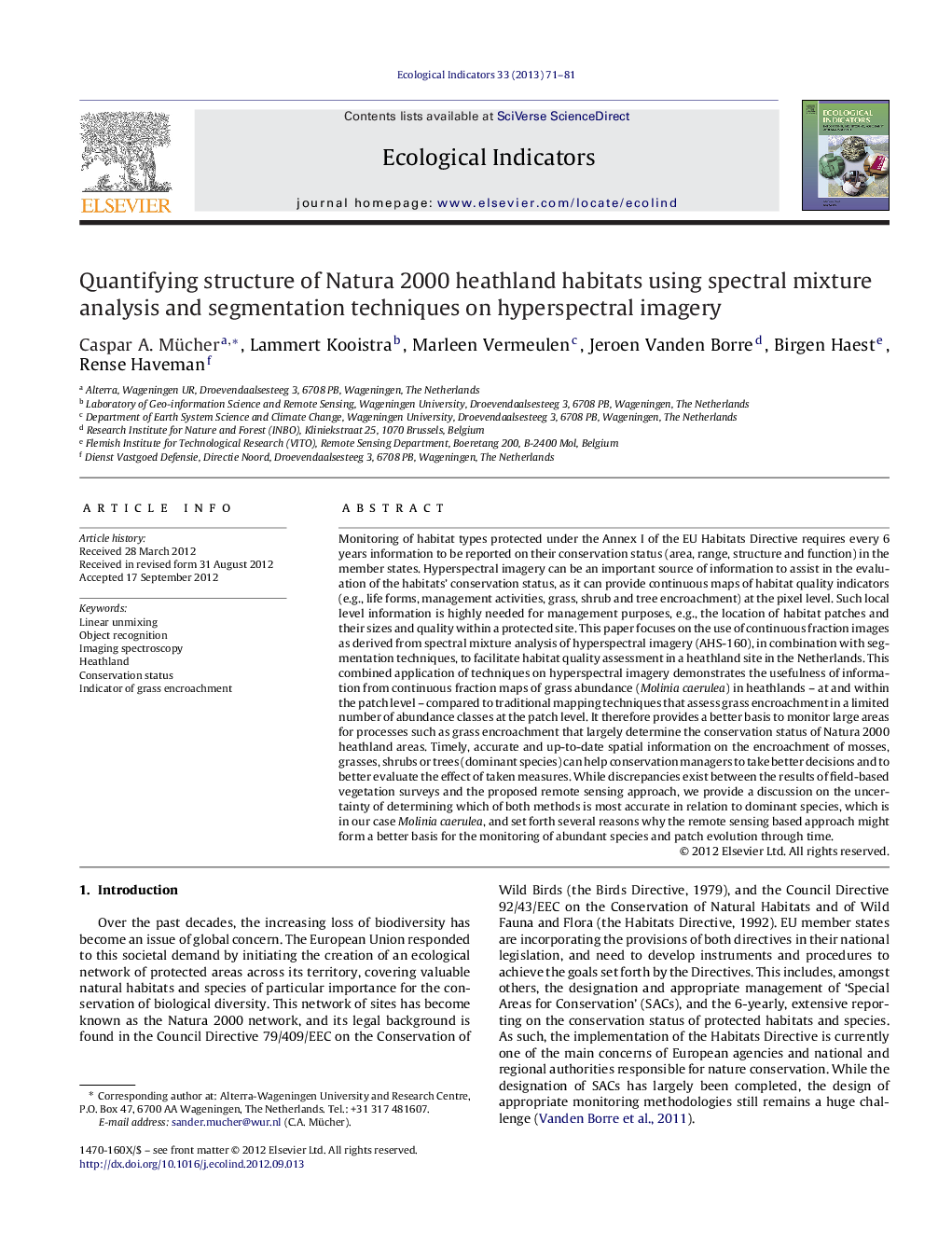| کد مقاله | کد نشریه | سال انتشار | مقاله انگلیسی | نسخه تمام متن |
|---|---|---|---|---|
| 4373280 | 1617167 | 2013 | 11 صفحه PDF | دانلود رایگان |

Monitoring of habitat types protected under the Annex I of the EU Habitats Directive requires every 6 years information to be reported on their conservation status (area, range, structure and function) in the member states. Hyperspectral imagery can be an important source of information to assist in the evaluation of the habitats’ conservation status, as it can provide continuous maps of habitat quality indicators (e.g., life forms, management activities, grass, shrub and tree encroachment) at the pixel level. Such local level information is highly needed for management purposes, e.g., the location of habitat patches and their sizes and quality within a protected site. This paper focuses on the use of continuous fraction images as derived from spectral mixture analysis of hyperspectral imagery (AHS-160), in combination with segmentation techniques, to facilitate habitat quality assessment in a heathland site in the Netherlands. This combined application of techniques on hyperspectral imagery demonstrates the usefulness of information from continuous fraction maps of grass abundance (Molinia caerulea) in heathlands – at and within the patch level – compared to traditional mapping techniques that assess grass encroachment in a limited number of abundance classes at the patch level. It therefore provides a better basis to monitor large areas for processes such as grass encroachment that largely determine the conservation status of Natura 2000 heathland areas. Timely, accurate and up-to-date spatial information on the encroachment of mosses, grasses, shrubs or trees (dominant species) can help conservation managers to take better decisions and to better evaluate the effect of taken measures. While discrepancies exist between the results of field-based vegetation surveys and the proposed remote sensing approach, we provide a discussion on the uncertainty of determining which of both methods is most accurate in relation to dominant species, which is in our case Molinia caerulea, and set forth several reasons why the remote sensing based approach might form a better basis for the monitoring of abundant species and patch evolution through time.
Journal: Ecological Indicators - Volume 33, October 2013, Pages 71–81